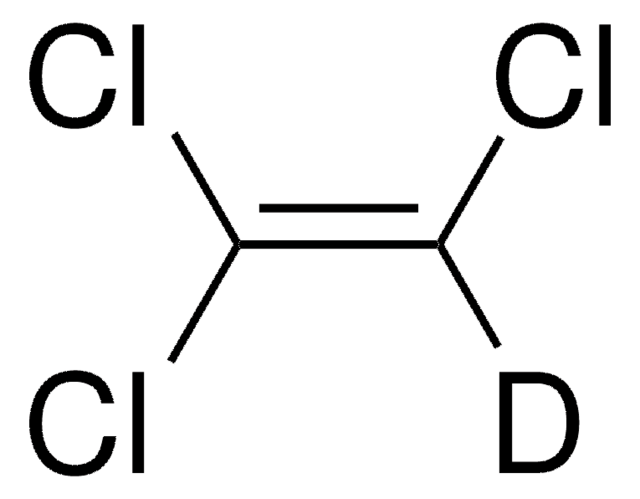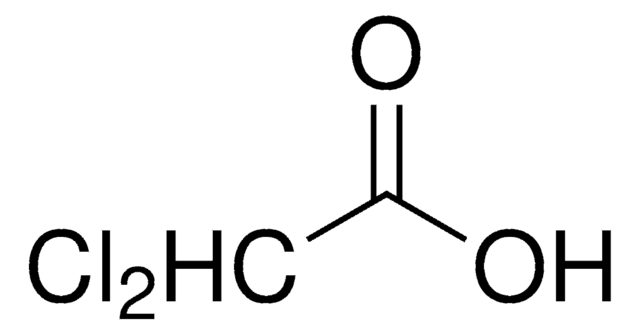251402
Trichloroethylene
ACS reagent, ≥99.5%
Synonym(s):
TCE, Trichloroethene
About This Item
Recommended Products
grade
ACS reagent
Quality Level
vapor density
4.5 (vs air)
vapor pressure
61 mmHg ( 20 °C)
Assay
≥99.5%
form
liquid
autoignition temp.
770 °F
impurities
Free halogens, passes test
≤0.0001 meq/g Titr. acid
≤0.0003 meq/g Titr. base
≤0.02% water
evapn. residue
≤0.001%
color
APHA: ≤10
refractive index
n20/D 1.476 (lit.)
bp
86.7 °C (lit.)
mp
−84.8 °C (lit.)
density
1.463 g/mL at 25 °C (lit.)
cation traces
heavy metals (as Pb): ≤1 ppm
SMILES string
Cl\C=C(\Cl)Cl
InChI
1S/C2HCl3/c3-1-2(4)5/h1H
InChI key
XSTXAVWGXDQKEL-UHFFFAOYSA-N
Looking for similar products? Visit Product Comparison Guide
General description
Application
- As a solvent in the C- and O-glycosylation reactions of tetrahydropyran acetals and 2-deoxyglucopyranosides to prepare SN2 products.
- In the chemical industry for the synthesis of polyvinyl chloride, chloroacetic acid, hydrofluorocarbons, pharmaceuticals, insecticides, fungicides, fire retardants, fertilizer, and synthetic rubber.
- As a starting material in the synthesis of dichloroacetylene.
- As a reagent in the preparation of alkynic ethers.
- As a reagent for ethynylation and vinylation process.
Signal Word
Danger
Hazard Statements
Precautionary Statements
Hazard Classifications
Aquatic Chronic 3 - Carc. 1B - Eye Irrit. 2 - Muta. 2 - Skin Irrit. 2 - Skin Sens. 1B - STOT SE 3
Target Organs
Central nervous system
Storage Class Code
6.1D - Non-combustible acute toxic Cat.3 / toxic hazardous materials or hazardous materials causing chronic effects
WGK
WGK 3
Flash Point(F)
closed cup - does not flash
Flash Point(C)
closed cup - does not flash
Choose from one of the most recent versions:
Already Own This Product?
Find documentation for the products that you have recently purchased in the Document Library.
Our team of scientists has experience in all areas of research including Life Science, Material Science, Chemical Synthesis, Chromatography, Analytical and many others.
Contact Technical Service







